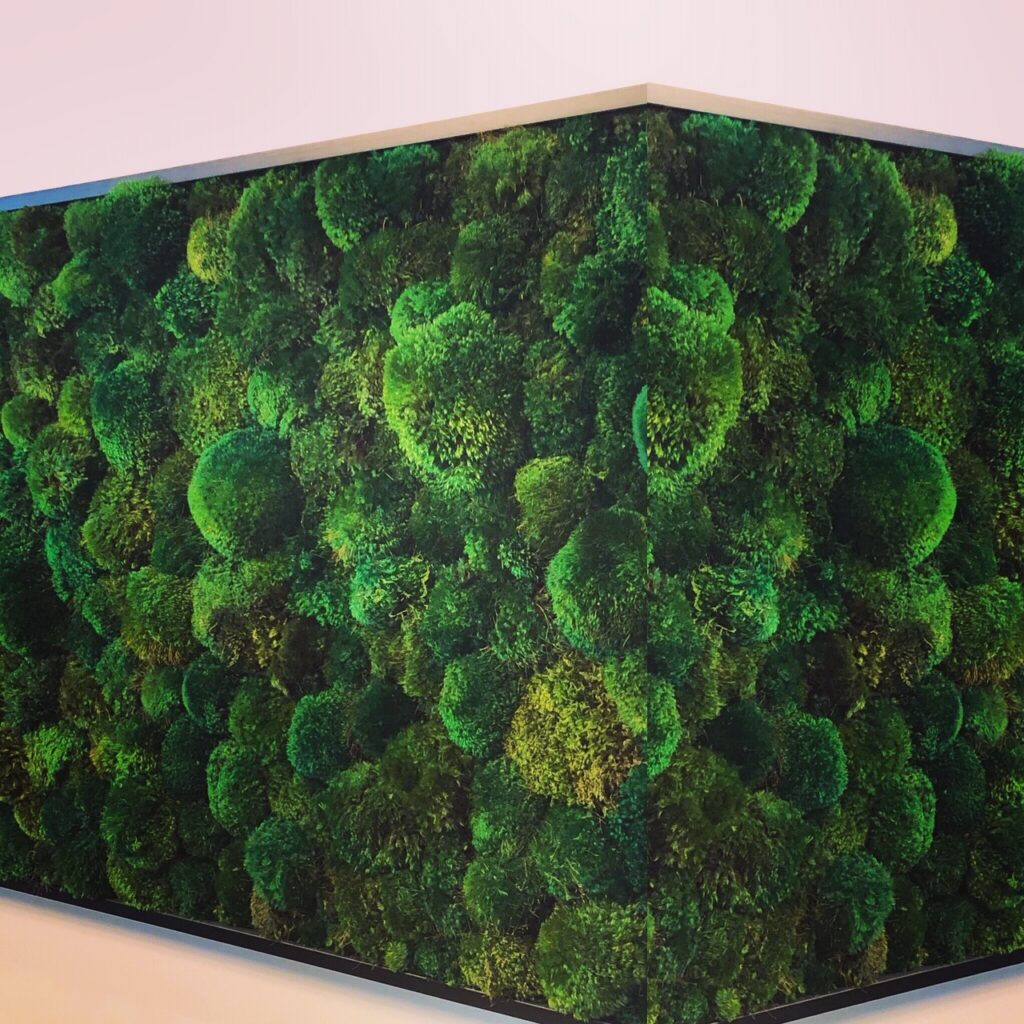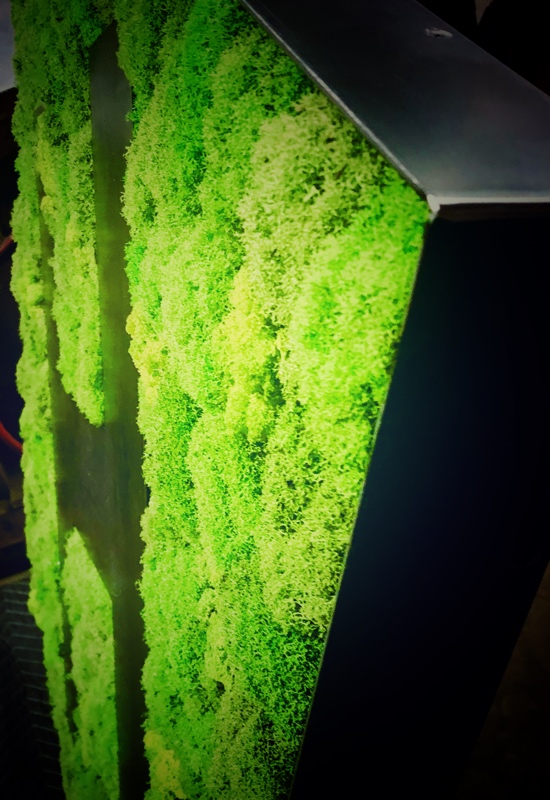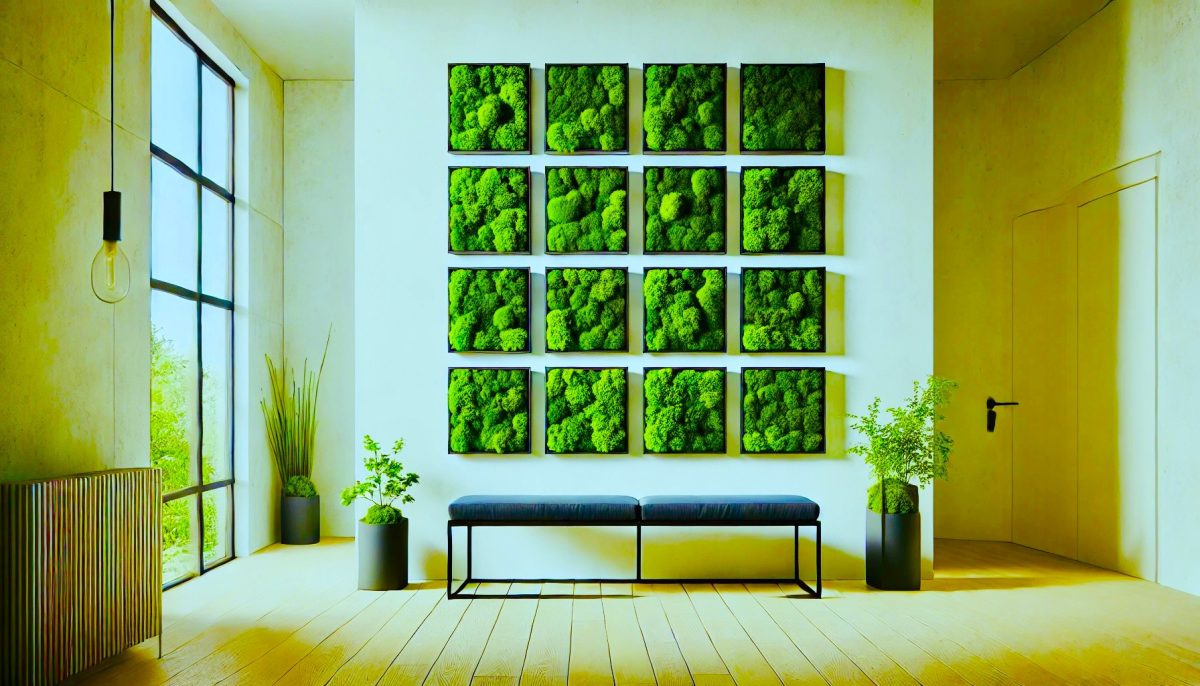An Introduction to Dr. Ibrahim of HOK
We have been thinking about biophilic design in healthcare for quite some time. But in the past, we wondered if the healthcare industry would find our products too risky. That’s why when we watched Dr. Andrew M. Ibrahim of HOK present on the topic, we were transfixed. Turns out, not only is there no risk, there is ample reward for all of us–regardless of which side of the desk (or needle or stethoscope) you are on. From physical therapy facilities to dental practices to hospitals, there are seemingly endless rewards and health benefits to incorporating nature into facility design and the patient experience.
This issue is broad and actually rather complex but Dr. Ibrahim did a superior job of addressing and connecting a multitude of issues in just over 30 minutes. You can view the full talk here and as you do, you might scratch your head as I did and ask, “Wait, Dr. Ibrahim is a surgeon and an architect?” The answer to that is yes. Not only is he an architect and a surgeon, he is also the Chief Medical Officer in Healthcare at HOK. Importantly, he is also a really nice guy and I know this because I spoke with him a few days after I watched his talk.
But I am getting ahead of myself. Let’s first address the key takeaways from the talk (from my perspective anyway) and then we will delve into articles and data from across the globe that portend great things for health and well-being in the not-so-distant future.
Our 3 Key Takeaways–The Broad Strokes
Because of this interdisciplinary education, training, and practice (and you will hear more about this in the introduction to his talk), Dr. Ibrahim approaches at the topic of health and health facility design with significant knowledge and strategic thinking that, when implemented, will benefit all of us.
So here are our key takeaways from Dr. Ibrahim’s talk:
- Health in all design (I wanted so badly to steal that title but it belongs to Dr. Ibrahim and HOK and it’s brilliant). What that means is that humans have known (and tried to address, at least since the 19th Century) the places we live, work and interact have great bearing on our health.
- Healthcare is the most expensive, complex and uncoordinated currently than it has been in human history.
- Our environments account for more than 50% of our overall health.
- The benefits become richer and more significant when we follow them through, over time.
I could write volumes on just those three takeaways but I really do want you to watch the talk yourself so instead, I will intrigue you with the scope of the talk that runs the gamut from vital history (John Snow, 19th Century doctor who connected health to the environments in which we lived and saved us all from Cholera) to the fact that architects have a long history of “stepping up to the plate” and there is are new opportunities to change our health, well-being and even our happiness.
A stand-out statistic from Dr. Ibrahim is that the clients of HOK are demanding explicit address of health in the environments they are creating.
In fact, 84% of clients, across all industries “aspire to explicitly address health in environments.”
–Dr. Andrew M. Ibrahim
Follow It Through
Since health in design can be incorporated into any design on the front end, Dr. Ibrahim (amongst others I’ll reference and link) and we know that data supports not only the demand but the advantages of health in all design in terms of wellness and cost-effectiveness, we predict health in all design will become a matter of course in the next few years.

But Dr. Ibrahim wisely reminds us that the results and benefits become more significant and pronounced when we look at them long term, over time and “follow it through” so to speak. You will understand how important this is when you watch his talk but suffice it to say, we see (in real life) the benefits of health in all design in a handful of living communities across the nation as well as the spaces we design and help design for our clients.
I’ll reference one super healthy community I have seen up close and in person: Vi at Grayhawk. My parents moved there a few years ago and Vi is an interesting model because Vi is a “Life Plan Community.” I will let you do your own research on that but the gist is that this life plan community includes the cost of living at Vi in a resort-like community, service and amenities, a beautiful home, and the monthly fee also includes access to the care center should the need arise. This is an option that does require that one is at the higher end of the tax bracket rather than the lower but there is not a room in the entire community that does not feature views of nature and gorgeous desert plants. Another benefit is the social community that develops. Vi is a community in which not only does “corporate” support the residents, perhaps, more importantly, the residents support each other and are well informed and strategic about planning for long term care for the residents and the costs associated with it.

So that is one community we could look to so as to “follow-through” but given the data supporting health in all design, I predict there will be more and more case studies on which to follow through and additional data to support the changes we can make to health care and health care facilities to make them more cost-effective, for all of us.
And when we do follow it through, we learn all sorts of wonderful lessons about the benefits for patients as well as for the bottom line. Laura Kazmierczak, writing for Medical Construction and Design Magazine points out that while patient outcomes are obviously extremely important, the availability of evidence regarding the cost benefits of biophilic design in healthcare settings is the only way to effectively promote implementation. She notes:
For most major building project types, cost factors heavily into the design decision-making process. With healthcare funding becoming scarcer as capital dollars disappear and insurance reimbursements shrink, facility administrators are often obliged to forecast a future which is seemingly uncertain.
-Laura Kazmierczak for Medical Construction and Design Magazine
But if we follow it through, we will be able to prove the cost benefits from the individual patient to the entire community. Because one thing is certain, people are happier and healthier with nature in view. And when people are happier and healthier, we all spend less on healthcare.
All of us.
Short and Long Term Health and Bottom Line Benefits
For the time being, I will throw a few noteworthy statistics at you that support Dr. Ibrahim’s view of the nature-filled future and health in all design.
Let’s take pain as just one example.
Natassja Wynhorst, Client Experience Executive of Interite Healthcare Interiors, shares these stats in her article, Biophilic Design in Healthcare:
“It is common for stress to be a major factor in inhibiting the body’s healing processes and recovery time. However, when patient rooms have views of nature, less pain medication is dispensed for the respective patients, and the overall condition improves as it reduces stress and relieves pain. Statistically speaking, the incorporation of biophilia within hospitals has reduced post-operative recovery by 8.5% and the use of pain medication by 22%.4“
-Natassja Wynhorst (citation Oliver Heath Design)
We have ample evidence that not only direct views of nature but also representational views of natural features such as say, a moss wall or garden scape can shape our environments and our responses to them quite significantly.

Laura Kazmierczak cites an experiment conducted with blood donors that found that those who viewed a wall-mounted television showing a tape of nature had lower blood pressure and pulse rates than those donors who watched a tape of an urban setting or even a talk or game show. And that’s like, just phoning in your biophilic design plan. A low bar so to speak (since many of us are kind of tired of screens in general) but the data bears out nonetheless.
And referencing Terrapin Bright Green’s research on the economics of biophilic design in hospitals, we can understand the “why” of this response. “Neuroscientists have found that views of complex, dynamic natural scenes trigger many more interactions of the mu (opioid) receptors in the large rear portion of the visual cortex. Viewing nature is literally a pleasurable experience.”

-Terrapin Bright Green
Health insurers have been investing in certain aspects of our health for years. From examining our food and dietary choices (and encouraging us to make smart food decisions) to housing, insurers clearly understand the value of the long game and the long term investment. It simply follows that investment in health in all design, including the facilities we visit for treatment, is a sound investment.
And since stress is a known cause of both mental health disorders and cardiovascular diseases (according to the World Health Organization, mental health disorders and cardiovascular diseases are expected to be the two prime contributing factors to illnesses worldwide by 2020). This statistic alone makes a compelling case for biophilic design in the workplace as well as in healthcare facilities.
Terrapin Bright Green, “The Economics of Biophilia.”
Why? Because We’re Worth It
So why did Singapore invest so much in the biophilic design of Khoo Teck Puat Hospital? Let’s just say it isn’t only because Singapore is gloriously tropical.

The energy-efficient design [hospital design] reduces energy costs by 50% and provides 40% of the floor area with the potential for natural ventilation.
Architect Magazine, Khoo Teck Puat Hospital
The data (compiled since the hospital opened in 2015) demonstrates the energy savings (33% less than conventional hospitals) and that equates to more than $5 million savings in electricity bills, and nearly $100,000 in water savings.
Roxanne Squires, writing for Healthcare Construction and Operations, provides us with this gem of a quote from Professor Lam, Senior Consultant on the project.
“To me, it’s not so much the cost but what value are you getting out of it. If you invest well, you’re going to get the returns many, many times over…
And if you design it well and integrate it well from the beginning, it doesn’t necessarily mean that it will cost a lot more.”
Professor Lam Khee Poh, dean of the National University of Singapore’s School of Design and Environment
We think that kind of investment, on the front end, for cost savings, and for health is very much worth it. For all of us.
Oh and about that risk? Sure, there are some challenges to biophilic design and Khoo Teck Puat Hospital administrators have been open and honest about the new but merely different challenges they face with live plants like insects and dead leaves clogging drains but that feels a lot safer than the volatile organic compounds (VOCs) put off by paint and other building materials. Every design has maintenance.

Wait. Except for moss. Moss is not only hypoallergenic (due to the natural paraffin preservation process) it is also essentially maintenance-free (aside from occasional dusting with compressed air). If you have questions about our real moss designs or simply want to learn more about moss, visit our blog page for previous posts and a podcast, email us, or just give us a ring.
As always, Yours in the Love of All Things Green,
Kasey L. Riley
The Fat Plant Society

